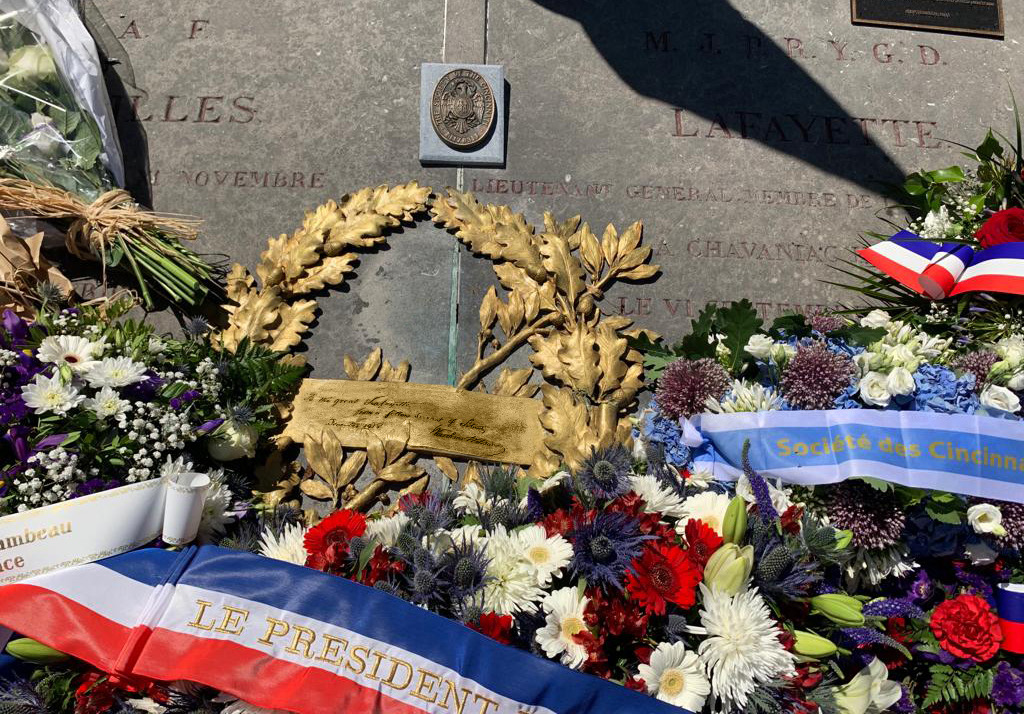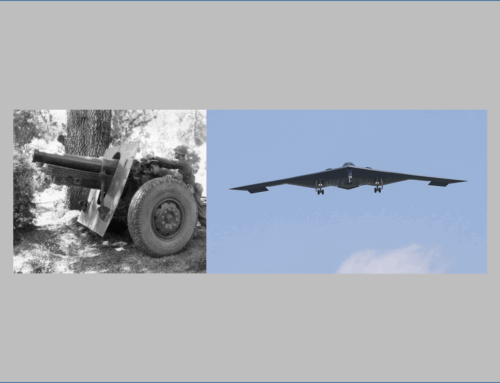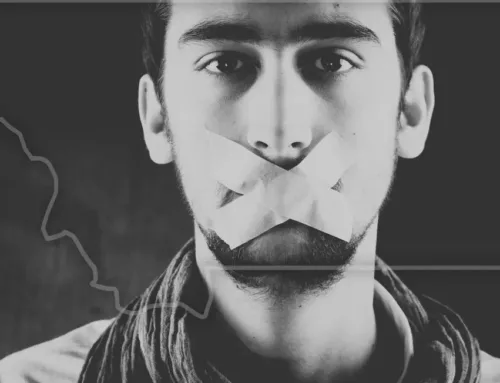What two giants of History say to each other in silence
Published: 18 July 2022
By Yorick de Guichen, Board Member, Society of the Cincinnati
Special to the Doughboy Foundation web site

A_Broken_Wreath_US_1
Woodrow Wilson and his wife Edith at their arrival in Paris in 1918.
Every year, the Society of the Cincinnati invites one American student to France to commemorate the friendship between French and American officers who fought together during the American War of Independence.
On July 2021, as soon as John P.P. Beall gets out the plane, I ask him, “Do you like biking?”
After dropping his luggage, we leave home to discover different statues: Washington and Lafayette – place des États-Unis; George Washington – place d’Iéna; Gilbert du Mothier, Marquis de Lafayette – in front of the Grand Pa-lais, Admiral de Grasse and his troops – under the Trocadero. We also ride along the quays of the Seine to the Statue of Liberty, then on rue Jacob to the Hotel d’York to see the commemorative plaque of the Peace Treaty recognizing the Independence of the United States, and then rue du Cherche Midi to the Maréchal de Rochambeau’s mansion, first headquarters of the Société des Cincinnati de France. It is around four o’clock in the afternoon, John and I have lunch in Saint Germain des Prés. Suddenly, I ask him, “And Picpus?” John answers, “Why not?” We speed on our bicycles, thinking we’ll be too late to reach Picpus Cemetery (close to the Place de la Nation) before it closes.
A woman with eyes the color of water opens a large blue gate. Her name is Genevieve, she kindly reassures us that we still have an hour. We visit the Chapel (where there were continual prayers since the French Revolution until recent times) and we are slowly overcome by the unique intensity and memories elicited by this revered place. Behind the blue gate, time stands still at Picpus.
John and I walk to the tomb of Lafayette. During our minute of silence, I notice a metal wreath behind the tomb, one part of which seems to be missing. I hesitate for one moment, then I suggest that I should put it back in place. I open a fence and notice that one part of the wreath is broken, and the rest is detached from its stand. I look at John and tell him smiling, “We now have a mission.”
Six months pass. It is the beginning of April, and I am back from an exhibition of MEANING – Honoring U.S. engagement in WWI – at Pierre Norange School in Saint Nazaire with a class of students from the Defense section. The crisis in Ukraine has just started and I am making a speech there about peace, in front of the U.S. Consul Elizabeth Webster who opened the conference. The next morning, I arrive early in Paris and decide to return to Picpus. The sun is just rising, the cemetery is closed, but the blue gate is half open. I enter. On my right, I hear a dog barking, but I continue, pass the Chapel, cross the gardens until I arrive at the wall surrounding the cemetery. To my surprise, the door is opened inviting me inside. I recognize the tomb of Layette and behind it there still is a broken wreath. I look at the tomb and ask him, “What do you want me to do?”
I decide to go back. In the alley leading to the garden, I meet the curator of Picpus who is holding on to his dog.
“The cemetery is closed,” he says.
“Yes, but the door was open,” I reply.
“What are you doing here?”
“I am coming to meditate on Lafayette’s tomb,” I reply. “And I think there is a metal plaque that is broken.”
“There is no broken metal plaque,” he responds.
“Are you sure? Why don’t we have a look together?”
“Ah, my friend, that is not a plaque, it is a wreath, that is very different,” he says (and insists on the “very”).
Together, Jean-Jacques Faugeron – the curator – and I agree to have the wreath restored. He says he will manage to contact the technical services of the Military Governor of Paris, an expert team in such restorations. On the metal wreath is inscribed, in a handwritten script: “To the Great Lafayette, from a fellow Servant of Liberty, Woodrow Wilson, December 1918.”
This is the story of the wreath and the plaque:
The Armistice of World War One has just been signed at 5:10 AM, Paris time, on November 11, 1918. Combat ceases at 11 AM.
Peace is fragile and the seas are still uncertain. After a nine day journey across the Atlantic, escorted by a convoy of 42 ships, President Woodrow Wilson and his delegation arrive in Brest on December 13, 1918. Wilson comes to set up the Peace between Nations, to handle the delicate ques- tion of territorial frontiers and to find an agreement on war reparations to inflict on the losers. Woodrow Wilson is the first President of the United States of America in office to set foot on the French soil. “I have been welcomed with so much joy that I felt like being at home,” he says. This Sun- day December 15, 1918, Wilson attends church with his wife Edith at the American Presbyterian Church, rue de Berri, then they drive through Paris in an automobile. No one expects Wilson to come to Picpus. Accompanied by Brigadier General Harts, a secret service operative and a French officer assigned as a personal aid, Wilson goes to pay his respects to the tomb of the Marquis de Lafayette.
In a letter sent to her family dated December 15, Edith Wilson writes: “This morning we went to the other American church, and afterwards to the tomb of Lafayette to put a wreath or, as they say over here, «a crown» on it.(…) The cemetery is in the grounds of an old convent where there are still some old nuns – all very old women dressed in white with capes and funny old white hoods this shape (…), and on their chests, two bleeding hearts with tongues of fire. We drove down a long avenue of trees (…) to a quiet corner, where are only a few tombs of the old, old families of France – the inscriptions of the names are like turning a page of history.»
 Meditation of American officers at the cemetery of Picpus. Independence Day, July 4, 1917.
Meditation of American officers at the cemetery of Picpus. Independence Day, July 4, 1917.
Saint Louis Dispatch journal comments: “Entirely unannounced, the President drove to the old Picpus Cemetery, where the amazed gatekeeper was almost too flustered to unlock the gates when he learned who his caller was”.
Doctor Cary T. Grayson writes in his diary: “The President removed his hat, entered the tomb, carrying a large floral wreath composed with oak leaves and laurels which he had arranged for. In the center, he had attached his personal card on the back of which he had written with his own hand- writing: “In memory of the Great Lafayette, from a fellow Servant of Liberty, Woodrow Wilson. December 1918.” As the President placed the wreath on the tomb, he bowed his head and stood silent before the resting place of the famous Frenchman who helped America in her fight for Liberty. The Saint Louis Post Dispatch journal adds: “The news of the President’s visit spread rapidly to the convent nearby, and as he left, he passed through lines of aged nuns, who came out to pay their respects to the American chief executive.”
Wilson’s journey in France continues, he goes to England and returns to Paris where he pronounces a speech in the House of the Representatives in the Palais Bourbon. In their statutes, the Assembly has no precedent for receiving a foreign President. Who cares, the assembly will override its rules and sit ‘standing up’!
 President Wilson giving a speech at the tribune of the House of Representatives in the Palais Bourbon February 8, 1919. Like all the assistance, the President of the Conseil, Mr. Clemenceau, the President of the French Republic, Mr. Poincaré, and the President of the Senate, Mr. Antonin Dubost, all are standing up in front of their chairs, facing the tribune. On the first row, Mr. Mantoux is the only man sitting. His duty is to take notes and translate President Wilson’s speech. (© Assemblée nationale L’Illustration n° 3962)
President Wilson giving a speech at the tribune of the House of Representatives in the Palais Bourbon February 8, 1919. Like all the assistance, the President of the Conseil, Mr. Clemenceau, the President of the French Republic, Mr. Poincaré, and the President of the Senate, Mr. Antonin Dubost, all are standing up in front of their chairs, facing the tribune. On the first row, Mr. Mantoux is the only man sitting. His duty is to take notes and translate President Wilson’s speech. (© Assemblée nationale L’Illustration n° 3962)
Six months have passed since Wilson last visited Picpus. We imagine how impatient he must be, hoping that his creation and original intention are perfectly reproduced. In his diary, Ray Stannard Baker, the President’s Press Secretary, states that this Sunday June 7, at the end of the day, the President inquires whether the wreath has been delivered. Later the next morning, on Sunday June 8, 1919, Wilson returns a second time to Picpus, alone, to deposit the wreath.
Doctor Cary T. Grayson comments: “This bronze wreath is a superb creation and attached to it is a permanent metal card upon which is written the President’s sentiments.” Plated with gold, Wilson’s handwriting is perfectly reproduced with the same depth, the same visual rhythm. The text reads: “To the Great Lafayette, from a fellow Servant of Liberty” signed with 13 letters : “Woodrow Wilson”. Each word counts, each capital letter does too. The original date is reproduced : “December 1918”.
In his diary, Grayson describes the scene: “The President went inside of the railing and placed the wreath with his own hands. Stepping back to gaze at it, and then moving forward to change it, until it finally satisfied him.” He adds: “All who saw it were highly delighted with it, and the French especially appreciated the sentiment behind it (…) To the people of France, the wreath will be a permanent memen- to of the first visit of the President of the United States to France (…). This wreath attracted a great deal of attention. ”It cost me a pretty penny,” added the President.
Every detail reveals that Woodrow Wilson’s intention was to make a deeply personal gesture, that he planned to give his creation in the most discreet manner, by way of his own hands. No speeches were made, no official pictures taken, except this photograph found in his personal diary dated the next day:

At the heart of the cemetery of Picpus, a place filled with history, and so much suffering during the French Revolution, Woodrow Wilson, the first American President to cross the Atlantic stands by Lafayette’s tomb, a Major General of the Army of the United States, considered as the adoptive son of George Washington, hero of the two worlds, whose body is buried under dirt brought from Mount Vernon. The American President signs with his own hand one of the greatest honors America can offer to France, at a crucial time of history. Wilson presents himself with humility, as a companion and “Servant of Liberty”, to the one to whom his country owes so much. After a fratricidal conflict and the most lethal battlefield in the history of humanity, as peace is yet not signed, and as every arbitrage raises harsh negotiations between winners and losers, Wilson brings to Europe a project that he most hopes for: a Society of Nations for a lasting peace.

What was Wilson thinking as he meditated on Lafayette’s grave? He must have waited a long time for this encounter and had surely prepared himself for it. As an American and a statesman, he was undoubtedly filled with a great sense of happiness in meeting with his “oldest Ally”, having both fought for the “common cause”, so priceless to his predecessor George Washington. Also, he is completely focused on his project, as vast as it is new, to spread the ideals of Democracy in Europe. Finally, he must grapple with a crucial issue – for which he accepts full responsibility – : “To bring order and organization to the peace for his country and to the people of the world.”
Audacity, ideals, a government of people, a vision and faith, all unite these two men separated by more than a century. Around them, below their feet, thousands of souls listen to what these two giants of History say to each other, in silence.
«To the Society of the Cincinnati de France,
giving all its shine to the wreath offered by President Wilson
means honoring a forgotten symbol of the history of French American friendship.
It also reminds us that the values that bind us together are profoundly sincere, active, and travel through time».Loÿs de COLBERT
Society of the Cincinnati of France
President
 “I find it truly moving to see both our national flags, bearing the same colors of bleu – blanc – rouge, flying proudly together. There is no better manner to honor the memory of the hero of two worlds than to perpetuate the values Lafayette fought for his entire life, from the shores of Virginia to the streets of Paris. My hope is that American and European leaders draw inspiration from Lafayette’s vision and build on it to develop solutions to the global challenges of our times.”
“I find it truly moving to see both our national flags, bearing the same colors of bleu – blanc – rouge, flying proudly together. There is no better manner to honor the memory of the hero of two worlds than to perpetuate the values Lafayette fought for his entire life, from the shores of Virginia to the streets of Paris. My hope is that American and European leaders draw inspiration from Lafayette’s vision and build on it to develop solutions to the global challenges of our times.”
Denise CAMPBELL BAUER
U.S. Ambassador in France
Quote from her Excellency’s speech in Picpus, July 5th 2022.
 “Friendship is to be kept up : the restauration of the wreath against the ravages of times is a duty. It illustrates the vivacity of transat- lantic ties between France and the United States of America. I am grateful to the Society of the Cincinnati to keep the memory alive.“
“Friendship is to be kept up : the restauration of the wreath against the ravages of times is a duty. It illustrates the vivacity of transat- lantic ties between France and the United States of America. I am grateful to the Society of the Cincinnati to keep the memory alive.“
General Christophe ABAD
Military Governor of Paris
We would like to thank:
- The Picpus Cemetery Conservator Jean-Jacques Faugeron, and the technical teams of the Military Governor of Paris: Sébastien Mermet & Fréderic Genina
- The Woodrow Wilson Presidential Library Staunton VA., Andrew R. Phillips, Curator & Director of Museum Operations
- The United States of America Embassy
- Her Excellency, Mrs. Denise Campbell Bauer
- The U.S. WWI Centennial Commission
- Monique Brouillet Seefried, Ph.D.
Sources
Photography of the wreath, Woodrow Wilson Scrapbook, ©White House Historical Association.
Mrs. Edith Bowling Wilson‘s Diary, December 15, 1918, Library of Congress.
Doctor R. T. Grayson’s Diary – December 15, 1918, Woodrow Wilson Library.
Saint Louis Post Dispatch – December 16, 1918, Woodrow Wilson Library.
L’Illustration – n° 3962 – February 8, 1919.
Ray Stannard Baker’s Diary – 7 June 1919, Library of Congress.
The Boston Globe Saturday – Saturday June 7, 1919, Woodrow Wilson Library.
Président Wilson, « Nous allons faire un monde pour vous où il fera bon vivre », 3 Février 1919.
G. Lenôtre, Le Jardin de Picpus, Les Pèlerinages de Paris Révolutionnaire, Perrin, 1970.
1919, un Président américain à Paris, Wilson dans l’hémicycle © Assemblée nationale.
Laurent Zecchini, Lafayette, Hérault de la Liberté, Fayard, 2019.
MEANING – Honoring US Engagement in WWI, Following the Patrouille de France U.S. Tour,
Yorick de Guichen et Hervé Saint Hélier, Meaning Company, 2017.

The Society of the Cincinnati perpetuates the souvenir of brotherhood in arms which unites French and American Officers who fought side by side for the war of Independence of the United States of America. Founded in 1783, George Washington was its first President. Today as in the past, the Cincinnati celebrate the values of liberty, dedication to the common good, and maintain the friendship that unites our two countries together since more than two centuries.



